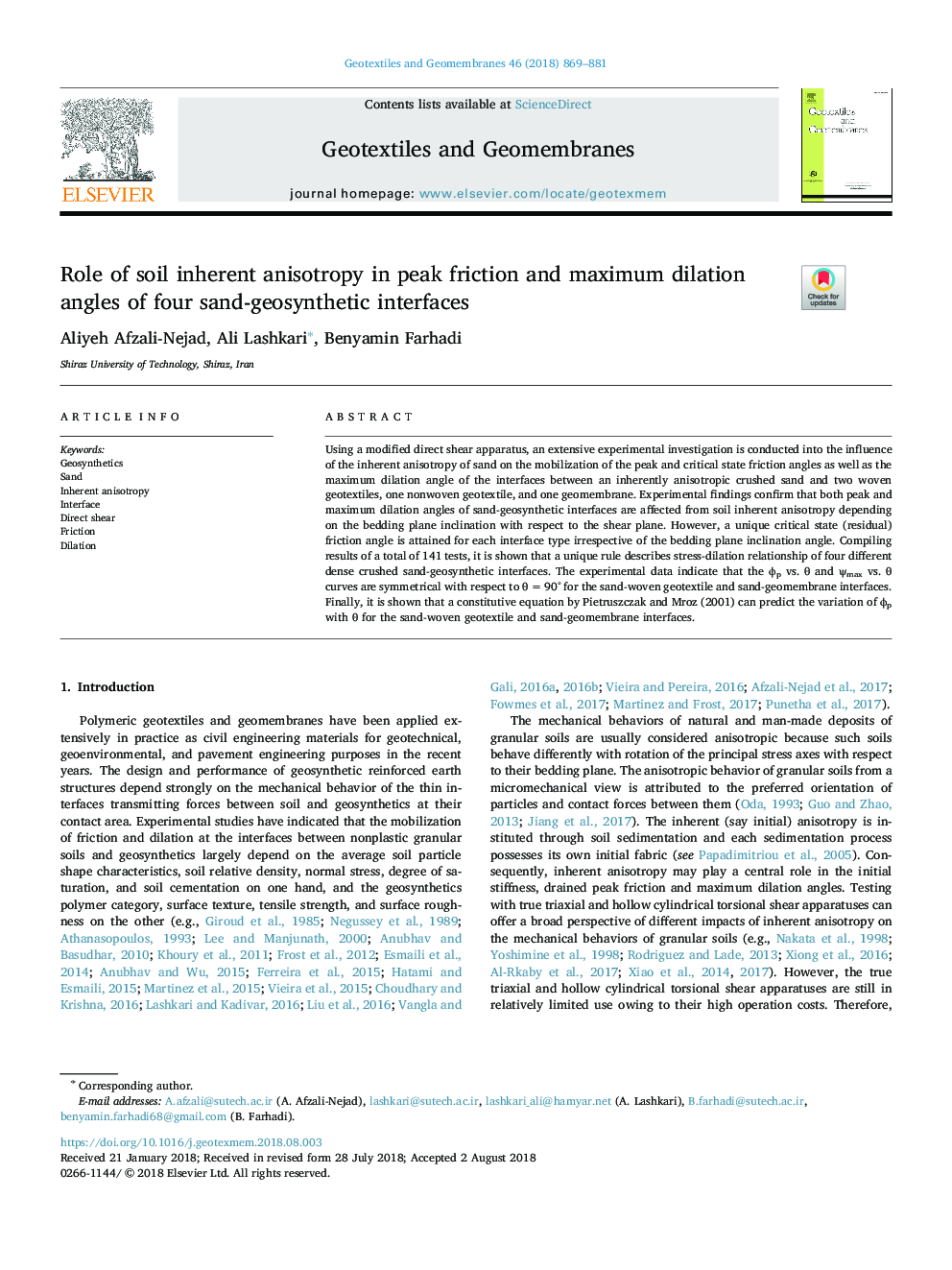| Article ID | Journal | Published Year | Pages | File Type |
|---|---|---|---|---|
| 10997951 | Geotextiles and Geomembranes | 2018 | 13 Pages |
Abstract
Using a modified direct shear apparatus, an extensive experimental investigation is conducted into the influence of the inherent anisotropy of sand on the mobilization of the peak and critical state friction angles as well as the maximum dilation angle of the interfaces between an inherently anisotropic crushed sand and two woven geotextiles, one nonwoven geotextile, and one geomembrane. Experimental findings confirm that both peak and maximum dilation angles of sand-geosynthetic interfaces are affected from soil inherent anisotropy depending on the bedding plane inclination with respect to the shear plane. However, a unique critical state (residual) friction angle is attained for each interface type irrespective of the bedding plane inclination angle. Compiling results of a total of 141 tests, it is shown that a unique rule describes stress-dilation relationship of four different dense crushed sand-geosynthetic interfaces. The experimental data indicate that the Ïp vs. θ and Ïmax vs. θ curves are symmetrical with respect to θâ¯=â¯90° for the sand-woven geotextile and sand-geomembrane interfaces. Finally, it is shown that a constitutive equation by Pietruszczak and Mroz (2001) can predict the variation of Ïp with θ for the sand-woven geotextile and sand-geomembrane interfaces.
Related Topics
Physical Sciences and Engineering
Earth and Planetary Sciences
Geotechnical Engineering and Engineering Geology
Authors
Aliyeh Afzali-Nejad, Ali Lashkari, Benyamin Farhadi,
